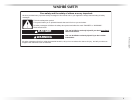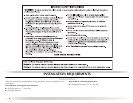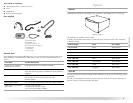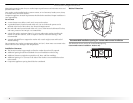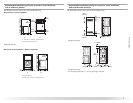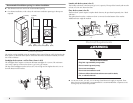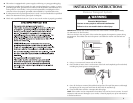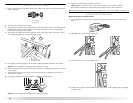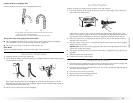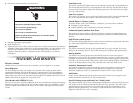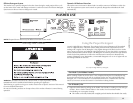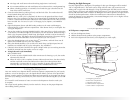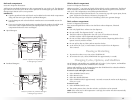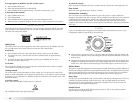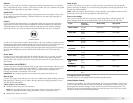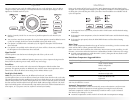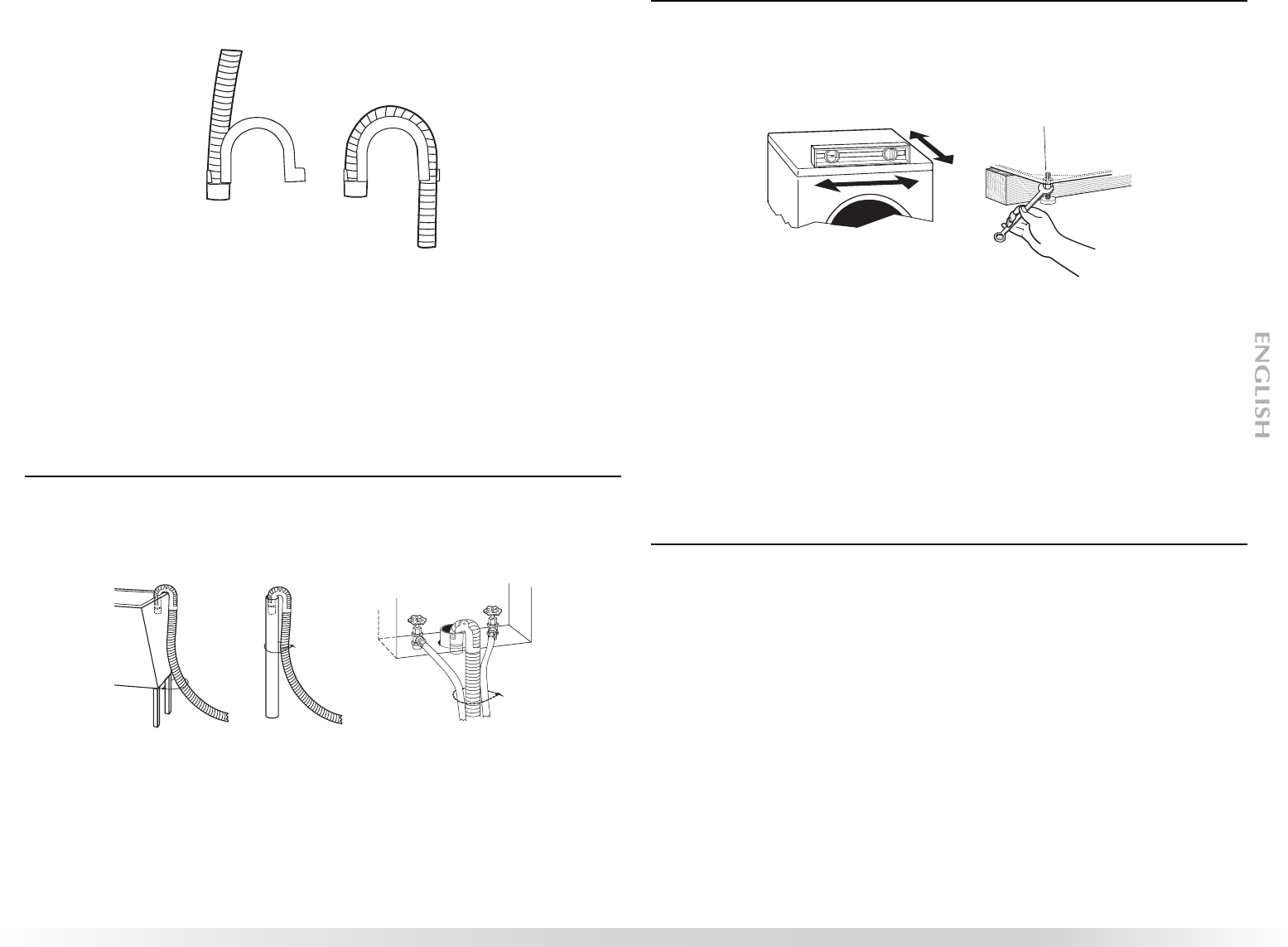
11
Laundry tub drain or standpipe drain
Connect the drain hose form to the corrugated drain hose.
AB
A.Snap either end of the drain hose form to the drain hose at the
point where the corrugation begins.
B.Bend drain hose over drain hose for
m and snap into place.
To keep drain water from going back into the washer:
Do not straighten the drain hose, and do not force excess drain hose into standpipe.
Hose should be secure, but loose enough to
provide a gap for air.
Do not lay excess hose on the bottom of the laundry tub.
Floor drain
You may need additional parts. See Floor drain under “Tools and Parts.”
Secure the Drain Hose
1. Drape the power cord over the washer top.
2. Sec
ure the drain hose to the laundry tub leg or standpipe with the beaded strap provided.
(See illustrations A and B).
AB C
If the washer faucets and the drain standpipe are recessed (see illustration C), put the
hooked end of the drain hose in the standpipe. Tightly wrap the beaded strap around the
water inlet hoses and the drain hose.
Do not force excess drain hose into the standpipe.
Level the Washer
Properly leveling your washer avoids excessive noise and vibration.
1. Check the levelness of the washer by placing a level on the top edge of the washer, first
side to side, then front to back.
If the washer is against a wall, move the washer out slightly before tipping back. If the
washer is not level, first prop the front with a wood block and adjust the feet as necessary;
then prop the back and adjust feet as necessary. Repeat this step until washer is level.
2. Make sure a
ll four feet are stable and resting on the floor. Then check that the washer is
perfectly level (use a level).
3. After the
washer is level, use a 17 mm open-end wrench to turn the nuts on the feet tightly
against the washer cabinet.
IMPORTANT: All four feet must be tightened. If the nuts are not tight against the washer
cabinet, the washer may vibrate.
4. T
he washer should not move front to back, side to side, or diagonally when pushed on its
top edges.
5. Sli
de the washer to its final location.
6. Confirm
the levelness of the washer.
Complete Installation
1. Check the electrical requirements. Be sure that you have the correct electrical supply and
the recommended grounding method. See “Electrical Requirements.”
2. Check that all parts are now installed. If there is an extra part, go back through the steps to
see which step was skipped.
3. Chec
k that you have all of your tools.
4. Dispose of/rec
ycle all packaging materials.
5. Check that the water faucets are on.



